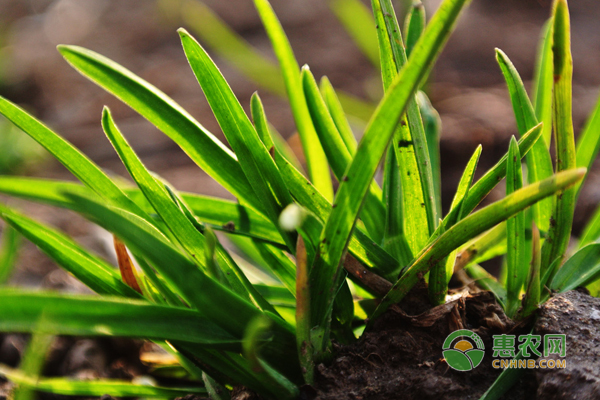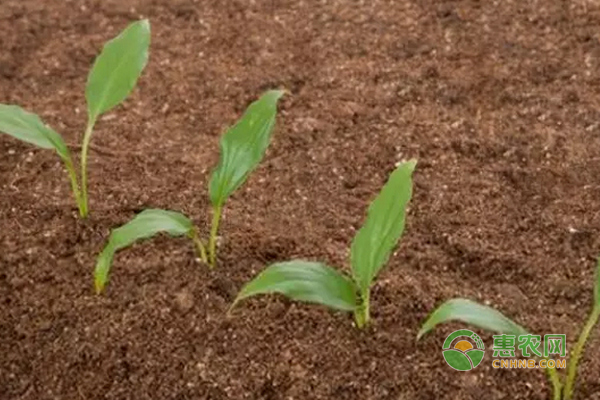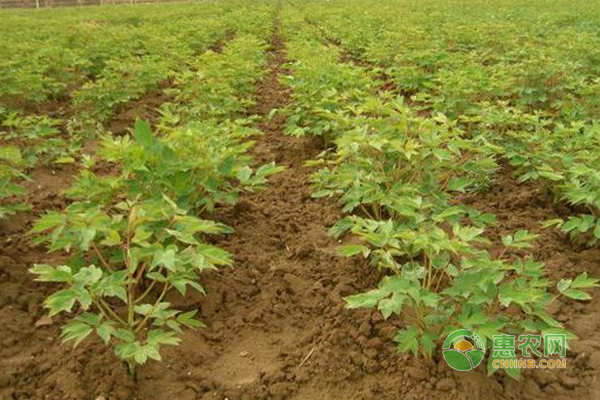Planting techniques: key points for monitoring soil water and fertilizer in sandy soil crops
Everyone knows that in crop planting, the control of soil water and fertilizer is the most important. If you want the crops you grow to grow well, then follow the key points of the sandy soil crops under Huinong. The small series briefly describes the necessity of monitoring soil water and fertilizer dynamics on sandy soil, and introduces drying method, time domain reflectometry (TDR), frequency domain reflectometry (FDR) and very simple and practical “soil irrigation depthâ€. The monitor method can be used as appropriate when monitoring the dynamics of water and fertilizer on sandy soil. I hope to help all growers!

It is understood that in China's agricultural production, sandy soils occupy a considerable proportion, and there are a large number of distributions in aeolian plains, river alluvial plains and coastal areas. According to the international classification of soil texture, the soil with sand content >55% is generally referred to as sandy soil, including sand and sandy loam. The sandy soil structure is loose, aerated and permeable, but the water retention and fertility are poor, and the nutrients are easily lost with water leaching. Therefore, planting crops on sandy soil should monitor the dynamics of soil moisture and nutrients, avoid excessive irrigation, and reduce water and fertilizer losses.
1. Sandy soil is prone to water and fertilizer infiltration loss
Because of its texture characteristics, sandy soil has special advantages in the cultivation of various crops. For example, planting rhizomes on sandy soil has a smooth surface and good commercial properties. In the north, large areas of potatoes, carrots and other crops Planted on sandy soil; planting melon on sandy soil is conducive to controlling water and increasing sugar accumulation.
With the widespread use of water and fertilizer integration technology, sandy soil can really exert its advantages of aeration and water permeability. As long as the management measures are appropriate, higher yield can be achieved on sandy soil. However, the most important management requirement for water and fertilizer management in sandy soil is to avoid excessive irrigation and reduce the loss of water and fertilizer.

In the soil of different textures, the diffusion path of the water infiltrated soil layer is different. On the clay loam soil, the lateral diffusion rate of water is greater than the velocity of longitudinal diffusion, and it is oblate on the section; on sandy loam, The velocity of lateral diffusion of water is substantially equal to the velocity of longitudinal diffusion, and it is nearly circular in cross section. On sand, the lateral diffusion of water is lower than that of longitudinal diffusion, and it exhibits a rod shape on the profile. On sandy soils, water infiltration is faster.
Irrigation on sandy soils is subject to a small number of principles. One-time over-irrigation not only causes water infiltration, but the fertilizer also washes down with moisture. For example, after the farmer drip watering for 10 hours, the water infiltration depth exceeds 50 cm. In order to visually demonstrate the infiltration of fertilizer nutrients, we excavated the section and measured the EC value (conductivity) at each soil level using the soil EC meter. The results showed that the EC value of the soil from the top to the bottom gradually increased, indicating that the irrigation would be excessive. Causes fertilizer nutrients to be washed down to the lower layer.
2. The root system of the crop is mainly distributed in the upper soil.
Emphasis on avoiding excessive irrigation on sandy soils, on the one hand because sandy soil water and fertilizer are easy to infiltrate, on the other hand, the root system of crops is mainly distributed in the upper soil, and the position of water and fertilizer is related to the distribution of crop roots. Coincidence can be absorbed and utilized.
Although the roots of the crops are fattening, the roots can be plucked to absorb the infiltrated nutrients, but this adaptability is limited after all, the infiltration is too deep, and nutrient loss is inevitable. Moreover, the distribution of herbaceous roots in the soil is mainly concentrated in the upper soil of 20-30 cm. Taking melon as an example, it is theoretically believed that the roots of melon can grow to a depth of 1.5 m, but under the current high water and fertilizer cultivation conditions, the root system is not as widely distributed. In fact, the soil profile was excavated and the main roots were observed to be distributed in the upper soil of 0-30 cm.
Maize is a crop of roots and has a developed root system. The distribution of roots at various soil levels has been measured on corn. The specific operation is to layer the earthwork according to a certain area around the main root, and collect the visible roots in the earth and wash it for scanning analysis.

On the rain-fed corn, the root distribution characteristics under different tillage patterns were measured in a layer of 20 cm, and the roots were mainly distributed in the 0-20 cm soil layer on the two indexes of total root length and root length distribution. , about 70-80%. According to experience, in the upper soil with a depth of 0-30cm, the water and fertilizer just reach the area where the roots are concentrated, which is beneficial to the absorption of water and fertilizer.
3. Several methods commonly used in soil water and fertilizer monitoring
In view of the characteristics of sandy soil and the distribution of crop roots, it is particularly necessary to monitor the depth of irrigation on sandy soil and master the dynamics of soil moisture and nutrients.
There are many methods for monitoring soil water and fertilizer, such as weighing method, capacitance method, electric resistance method, microwave method, neutron method, Karl Fischer method, γ-ray method, nuclear magnetic resonance method, frequency domain reflection method (FDR), time domain. Reflection method (TDR), gypsum method, infrared remote sensing method, etc. Although there are many methods, each method has its own characteristics. In the process of use, it needs to be selected according to actual needs. Several commonly used methods are introduced below for reference.
3.1 Drying method
The drying method, also known as the weighing method, is the most classical and accurate method for determining soil moisture, and the only method that can directly measure soil moisture. It has been widely used due to its simple operation.
The specific method of the drying method is to obtain different levels of soil from the use of soil drilling equipment, weigh a certain amount of soil, put it in an oven at 105 ° C to constant weight, calculate the soil water content by subtraction method, soil The volumetric water content needs to be converted after obtaining the bulk density. The nutrients in the soil can be measured sequentially according to the soil level in the method, and the distribution trend of nutrients on the soil profile is obtained.
The drying method monitors soil moisture, and the process of sampling and measurement is time-consuming and labor-intensive, and the time density of the measured data is insufficient and the timeliness is poor. In addition, the sampling method of the drying method destroys the soil structure, and can be used for routine testing during actual use, but it is difficult to continuously monitor the dynamics of soil moisture at a fixed point.
3.2 Time Domain Reflectometry (TDR)
TDR measures moisture by determining the dielectric constant of the soil by measuring the propagation time of electromagnetic waves along the probe inserted into the soil, and then calculating the soil water content. TDR measures soil moisture with high precision, fast and simple operation, and can achieve continuous monitoring and recording without destroying soil structure. In recent years, it has been widely used for soil moisture monitoring and research. In addition, TDR can simultaneously determine soil water and salt content.
The TRIME-PICO-IPH profile moisture meter based on TDR technology measures the cross-section moisture sensor to different depths through pre-buried PVC water pipes, and reads and saves data using the handheld terminal operation. Using this method, water pipes can be buried in multiple places in the field to quickly measure the profile moisture of the soil.
The method of measuring soil moisture by TDR method needs to calibrate the parameters such as soil texture and bulk density before use. When used, it is greatly affected by soil voids, and when soil moisture is large, large deviation will occur. These are only technical, and the expensive price of their equipment has led to the majority of research and not for agricultural production.
3.3 Frequency Domain Reflectometry (FDR)
The frequency domain reflection method is a method of measuring moisture according to the frequency change of electromagnetic waves emitted by a sensor in different medium constant substances. FDR is lower in cost and technical realization than TDR, and it is easy to operate, and is less affected by soil bulk density and temperature.
The FDR probe can be connected to a traditional data collector for automatic contact monitoring. At present, the agricultural Internet of Things system, which integrates various sensors such as soil, atmosphere, radiation and crops, can not only monitor various crop growth and environmental indicators in real time, but also directly intervene in the field operation management after remote data processing.
The above is a classic method and sophisticated instrument monitoring measures. The following is a simple and practical device for monitoring the depth of irrigation - "Soil Irrigation Depth Monitor". The instrument was developed by Professor Zhang Chenglin from the Crop Nutrition and Fertilization Research Office of South China Agricultural University. It has been promoted and applied in many regions and crops. The soil irrigation depth monitor is based on the principle of buoyancy. When water infiltrates into the internal water storage pipe, the buoy inside will be jacked up to indicate the effect. The instrument is simple in structure, easy to operate, accurate in indication, and capable of indicating the depth of irrigation sensitively.
In use, the soil irrigation depth monitor is embedded in a predetermined depth, for example, buried at 25-30 cm, placed vertically, and the cultivated layer soil is restored to its original state. The irrigation time is determined by observing the buoy during irrigation, and the irrigation is stopped when the buoy is floating. After several uses, the suitable irrigation time under the soil condition can be known. The soil irrigation depth monitor is sensitive on sandy soils, while the reaction on the more viscous soil may be slightly delayed.
The soil irrigation depth monitor also has an important role in detecting soil nutrient leaching by collecting soil leaching solution. When used, it can be buried several times at different depths, and the extraction solution can be used for EC and nutrient detection. In use, we observed that on sand, whether it is irrigation water or irrigation fertilizer, the EC value of soil leaching solution is higher, which also directly indicates that the leaching effect of sandy soil nutrients is very strong, so monitoring soil water and fertilizer Dynamic, it is necessary to reduce the leaching loss.
Most people know that the length of the crop is good or not. It is appropriate to see whether the soil water and fertilizer are suitable. In order to reduce the loss of crop yield during the planting process by the growers, the key points of the monitoring of water and fertilizer in the sandy soil crops shared by the above-mentioned Hui Nongwang Xiaobian are quickly learned. !
Biological fingerprints have the characteristics of uniqueness and stability, without the permission of the highest authority of the manager, any individual without qualified fingerprints can not enter. Therefore, the fingerprint safe relative to other categories of safe, a good solution to the problem of others imitation keys to open the door. If you use a traditional mechanical safe, you may face risks such as having a key made by others or using a special unlocking tool to open the lock.
Traditional safes often require keys or combinations to open, which can be easily lost or forgotten. With a tiger fingerprint safe, you simply need to place your finger on the scanner to open it. This eliminates the need to remember or carry keys or codes, making it more convenient and efficient.
Many tiger fingerprint safes have the ability to store multiple fingerprints in their system. This means that you can grant access to multiple individuals, such as family members or trusted employees, without the need to share keys or combinations. Each person can have their own unique fingerprint registered, ensuring accountability and security.
Fingerprint Safe,Coffee Color Safe,Fingerprint Panel Safe,Gold Color Fingerprint Safe,The Material Of Fingerprint Safe
Hebei Hupai Aodi Cabinet Industry Co.,Ltd. , https://www.aodicabinet.com